View from a cinder cone at Capulin Volcano National Monument
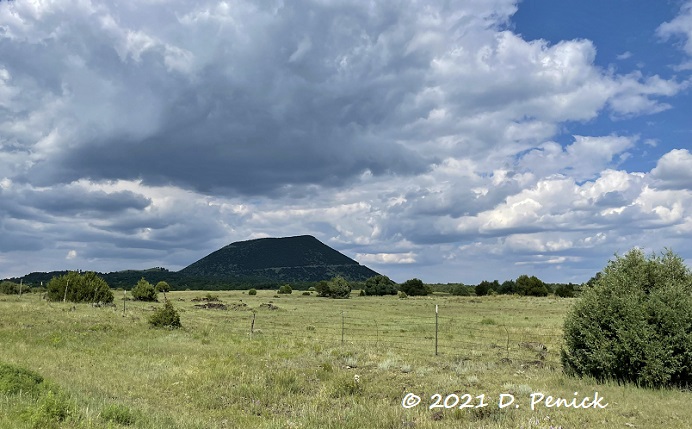
Capulin Volcano, a decapitated pyramid, rises improbably over the grassy plains of northeastern New Mexico. A driver eager for a roadside distraction in the middle of nowhere might be tempted to exit Highway 87 for a closer look. Somehow, though, despite cruising past Capulin Volcano National Monument many times (it’s on the way from Austin to Colorado), we’d never done it. We were never willing to add a few hours to an already long day of driving — never, that is, until last month, while driving home from Aspen.
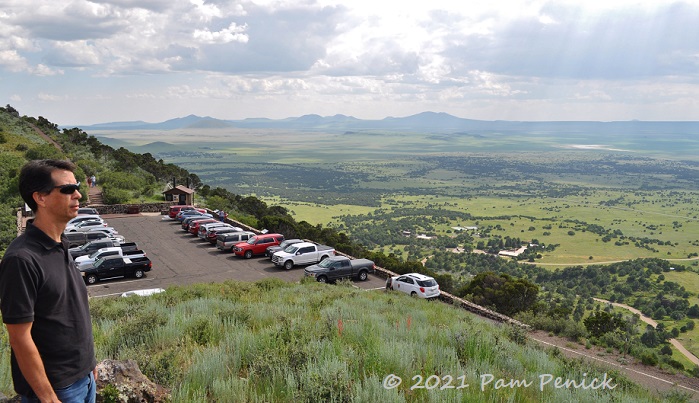
As soon as the dark, mysterious cone appeared on the horizon this time, we said to ourselves, Let’s go. And so one cloudy afternoon in late July, we found ourselves spiraling to the summit on a narrow paved road and then puffing our way up the Crater Rim Trail, which offers spectacular, 360-degree views of the surrounding plain, studded with over 100 ancient cinder cone volcanoes.
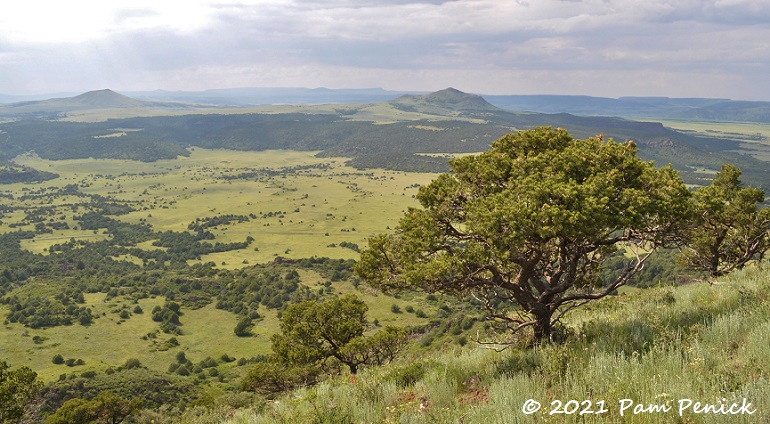
Capulin Volcano was born 60,000 years ago, when magma erupted from a vent in the earth’s crust and spewed into the sky. As superheated rock showered down around the vent, it grew into the pointed mountain we see today. Many cinder cone volcanoes eventually blow their tops, obliterating their distinctive conical form. But Capulin kept its symmetrical shape by venting from its base during later eruptions. And because it’s a relatively young volcano, it hasn’t been eroded away by wind and water. It stretches 1,300 feet into the sky, at a total elevation of 8,182 feet above sea level. Even after a week at high altitude in Colorado I felt a little breathless while climbing to the top.
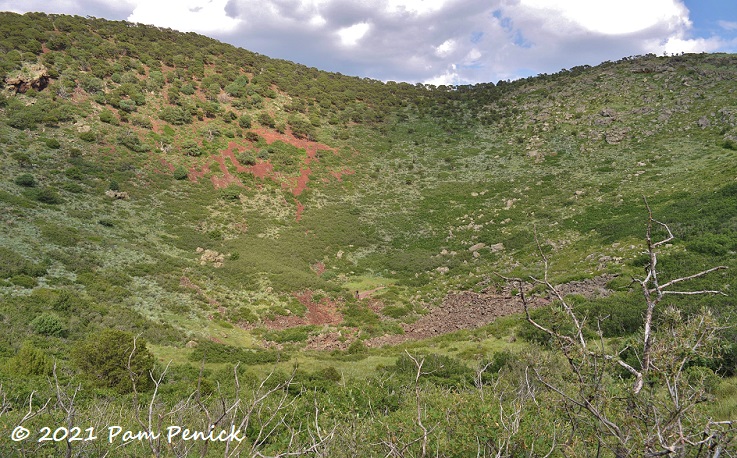
The forested swale of the central crater, where molten rock once ejected from the depths, looks unimpressive in this photo, but in person it seems a deep bowl. A trail leads 100 feet down to the bottom, and if your screen is large enough you might see the tiny figure of a hiker there. Any danger of an eruption today? No, experts say. Capulin and the other cinder cones in the area are extinct and will not erupt again. However, it is possible a new cinder cone may form in the volcano field one day — whether in our lifetimes or tens of thousands of years hence, no one knows.
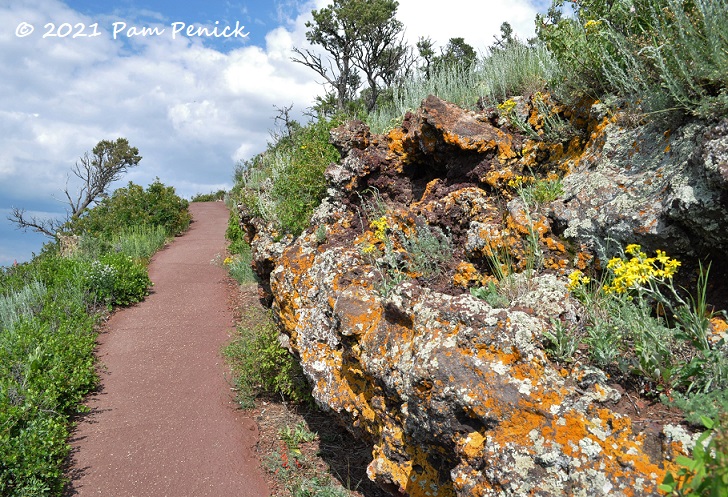
As we hiked the 1-mile trail around the rim of the volcano, I enjoyed wildflowers, sagebrushy native plants, and brightly colored lichen on craggy, dark-red lava rock. Also, lots and lots of lizards and quite a few flying insects, including, along one stretch, a swarm of flying ants that we had to dash through and then brush out of our hair and clothes.
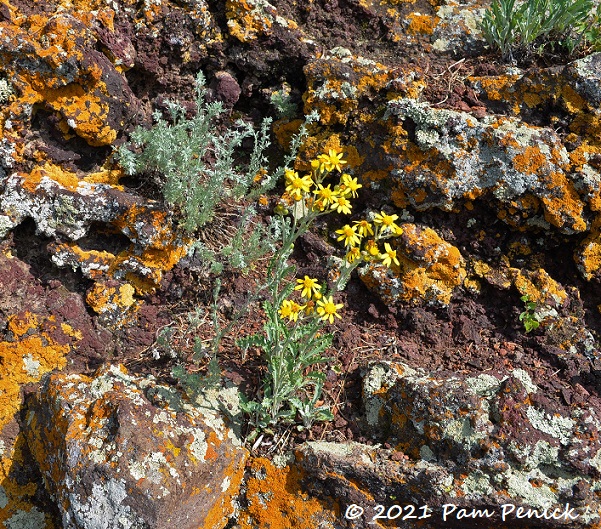
A groundsel, perhaps?
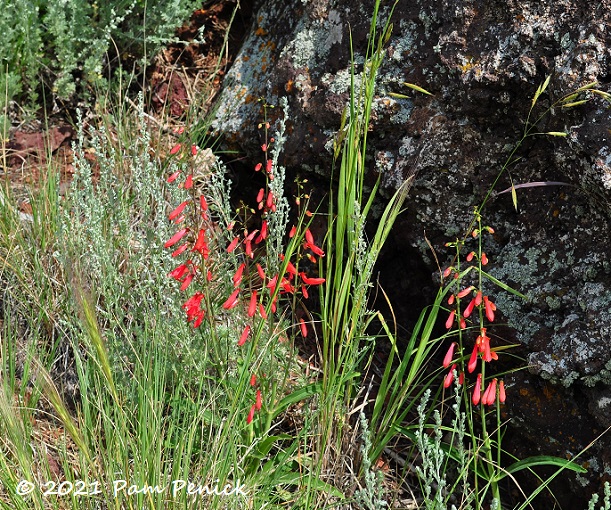
Beardlip penstemon (Penstemon barbatus), I think.
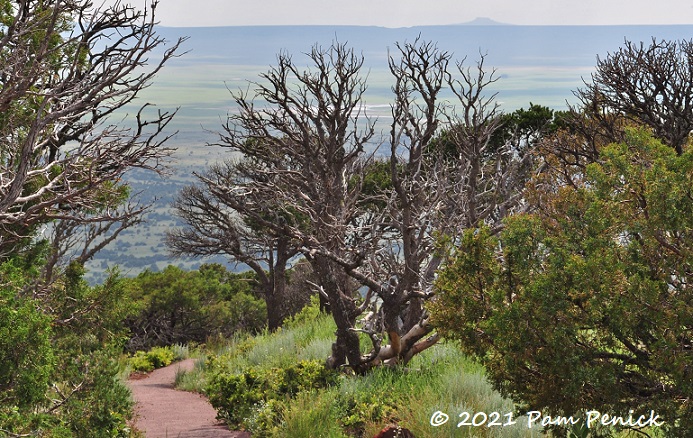
Capulin may be young, but other volcanoes in the 8,000-square-mile Raton-Clayton Volcanic Field are much, much older. Volcanism began here 9 million years ago, and all the volcanoes’ straws pulled from the same magma milkshake.
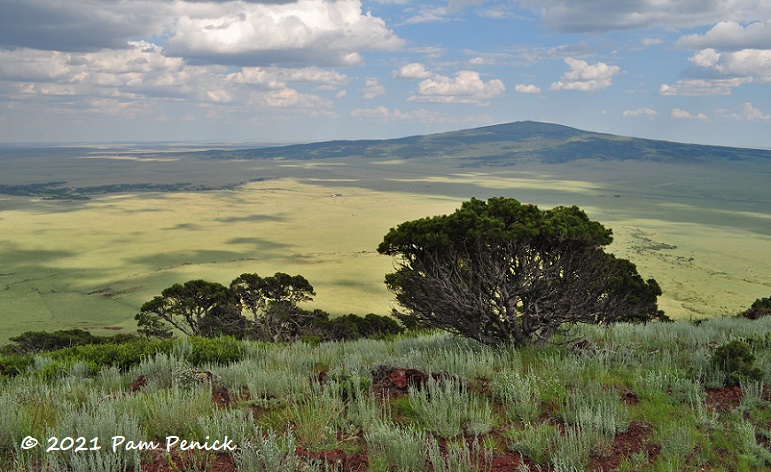
Bigger peaks on the horizon include one, Sierra Grande, that soars 2,200 feet high. I’m not sure if it’s this one, but the view of the sunlit plain and dark-shouldered peak, with cotton-ball clouds scudding overhead, is majestic.
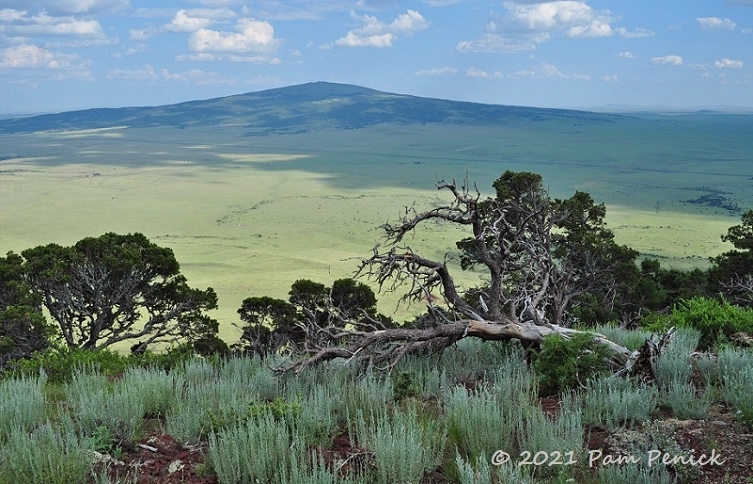
Silvery brush and dark pines or juniper grow atop Capulin and help slow erosion. On the vast plain below, Charles Goodnight and Oliver Loving threaded their famous cattle drive of the mid-1800s through the volcanoes, bound for markets in Colorado and Wyoming. For hundreds of years before that, Apache and Ute hunted bison across these plains.
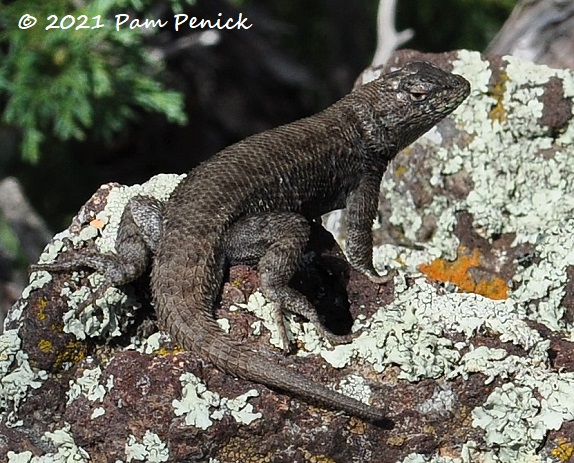
One of the many lizards basking atop Capulin
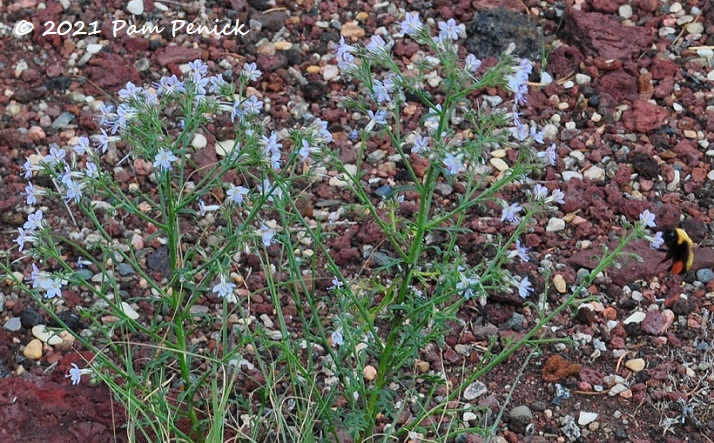
A bumblebee gathering pollen
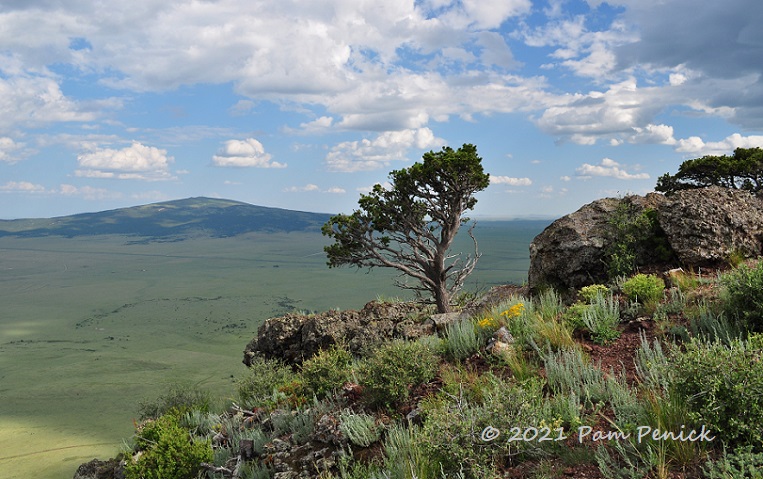
Such epic views
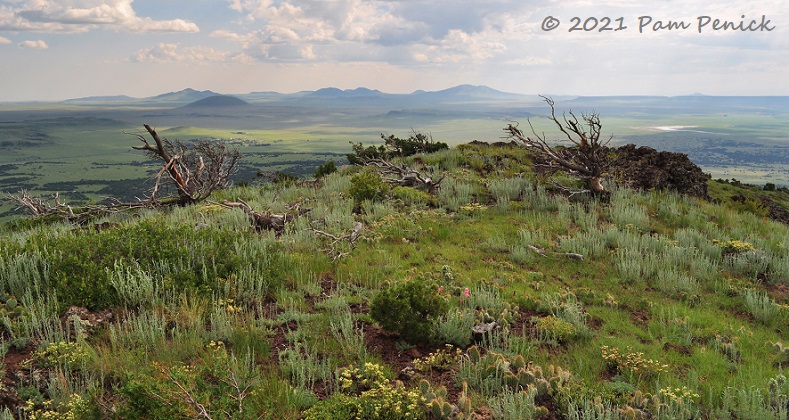
Long-extinct volcanoes poke up in every direction.
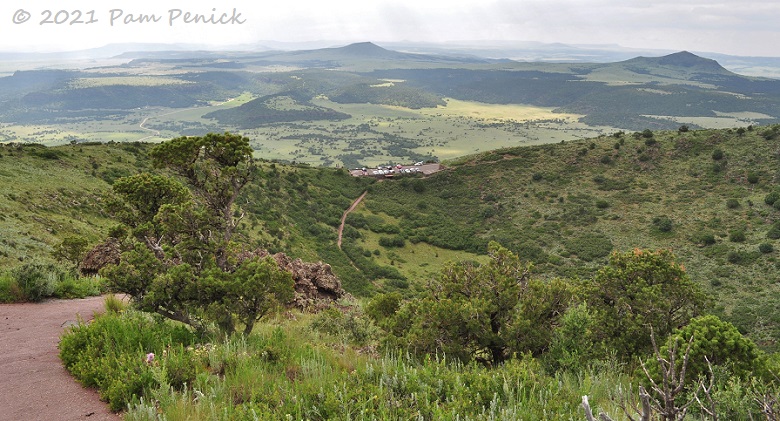
It’s amazing to consider how violent eruptions and lava flows over millions of years have shaped the beautiful green vistas we enjoy today.
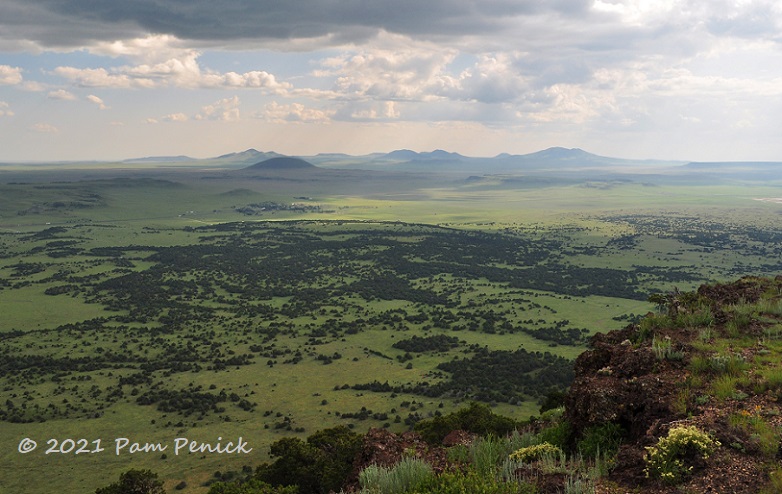
Life surely does find a way.
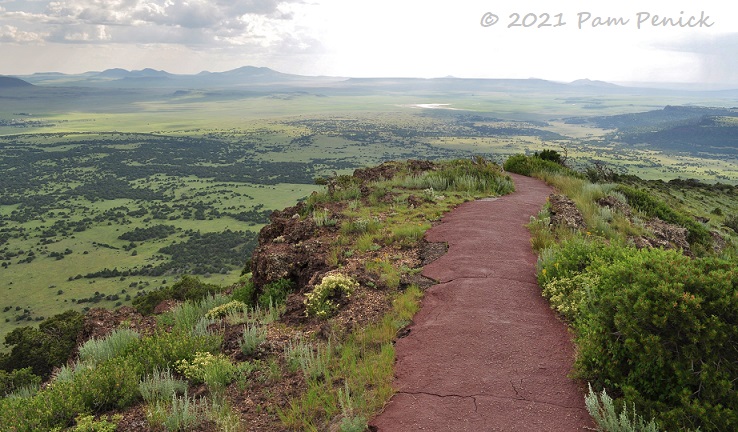
From the sky-high trail, we watched a distant thunderstorm drench the monsoon-green plain (and yes, we scurried on down when we heard the first rumbles of thunder).
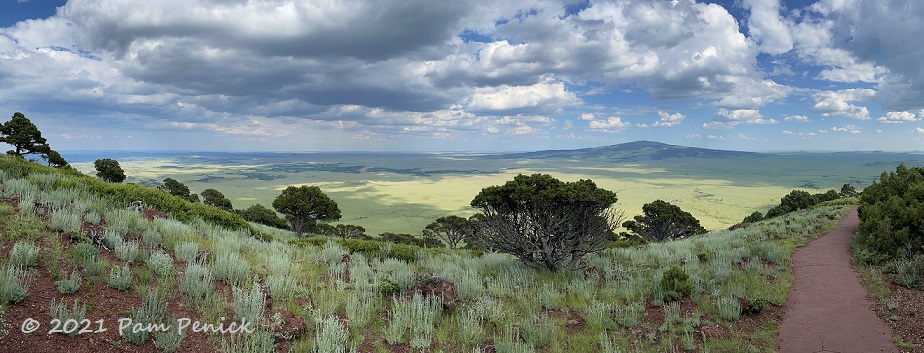
Such beauty is definitely worth a detour and a breathtaking (literally) climb.

If you have a chance to stand atop Capulin yourself, don’t pass it by.
Up next: An Americana-flavored detour to Cadillac Ranch. For a look back at the cowboying action at Snowmass Rodeo, which we saw while visiting Aspen, click here.
__________________________
Digging Deeper
Come learn about gardening and design at Garden Spark! I organize in-person talks by inspiring designers, landscape architects, authors, and gardeners a few times a year in Austin. These are limited-attendance events that sell out quickly, so join the Garden Spark email list to be notified in advance; simply click this link and ask to be added. Season 8 kicks off in fall 2024. Stay tuned for more info!
All material © 2025 by Pam Penick for Digging. Unauthorized reproduction prohibited.


Wow Pam, these are some really nice vistas. I can remember flying from San Antonio to Denver to visit my sister’s family and saw these big black holes and wondered what they might be. The pilot never said anything about them, but I’ll bet these might be them.
Ah, maybe so! Things look so different from the air, don’t they?
Well worth the unplanned side trip, Pam. Those last two panoramic views are incredible.
Thanks, Kris. Those views were amazing.
We stopped at Capulin a few years ago, too, and were impressed by the views, the rocks, and all the lizards. In general, we’ve found that National Monuments are always worth a stop. They aren’t usually as crowded as the National Parks, which is a huge plus when many tourists are out and about elsewhere.
That’s a very good point, Linda. You’ve convinced me to stop more often when we see those signs, even if we don’t know much about the place.
Oh, wow, those last two pictures! You’ve sold me on stopping here if I’m ever in the area.
What else ya gonna do out here?? 😉